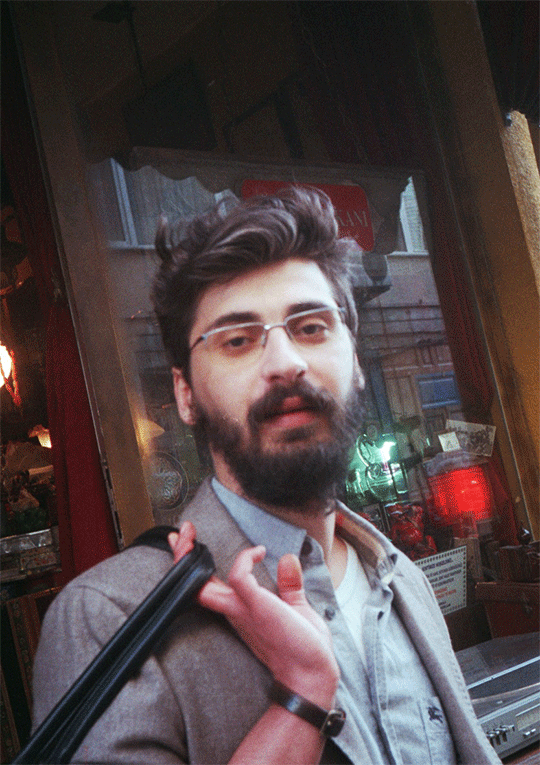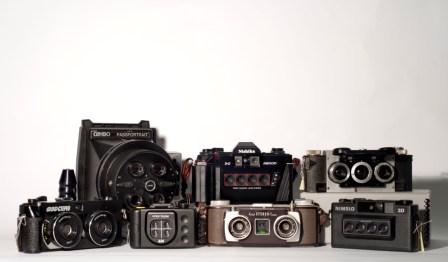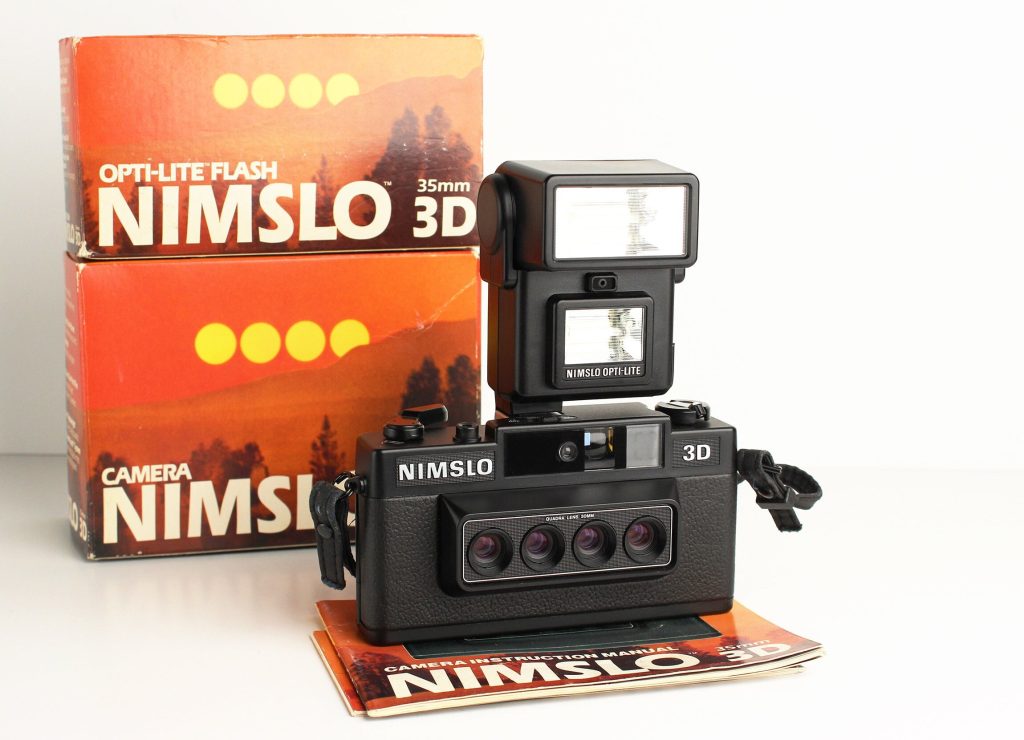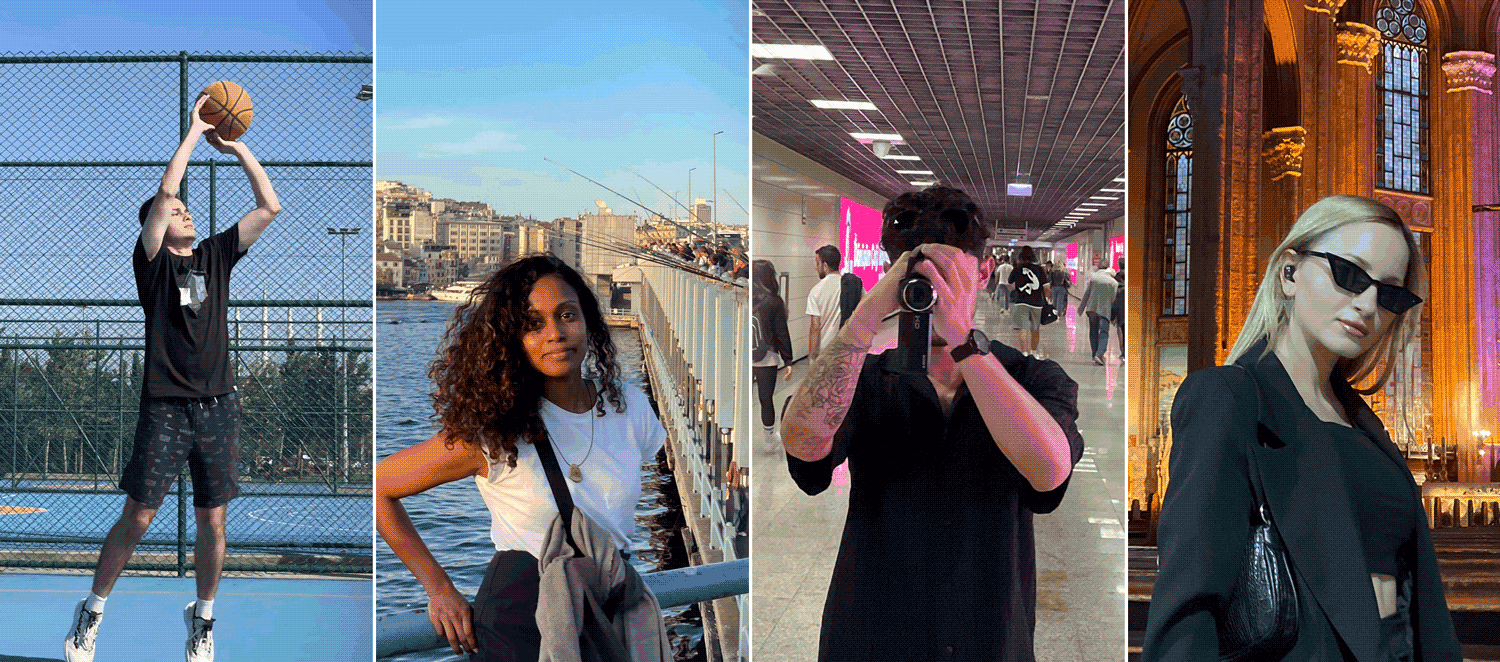1. What is a Wigglegram?
The world of photography is constantly evolving with the evolution of visual expression. In this context, wigglegram photography is an important part of a journey from the past to the present. First introduced in the 1980s, wigglegram is a technique that combines images taken through a series of lenses and plays them sequentially, creating a slightly animated 3D effect. By combining images taken from several different angles, users create impressive compositions that give the viewer a sense of depth and dynamism. The photo I shared above is a series of photos taken from 4 different angles of a scene. Although there is very little distance between each of these photos, they stand out when they are animated.

Wigglegram is a slight motion effect created by displaying photographs taken from multiple angles in succession. It offers an experience that virtually “includes” the viewer in the photograph without the need for any glasses or additional equipment to create a 3D perception. Wigglegrams, which are frequently used on social media, especially in GIF format, are produced with a technique that has become popular in the digital world but has roots in the past.






To understand wigglegrams better, it is essential to explore the history of 3D photography, which predates the 1980s. This article discusses the technological development of wigglegrams, their connection to stereoscopic imaging, and their future potential.


2. The Origins of Wigglegram: Stereoscopic Photography
The first human photograph was taken in 1838, and during the same period, stereoscopic photography introduced the first 3D camera into our lives. In other words, the history of 3D photography is as old as the history of photography itself. The origins of 3D photography go back as far as the early days of photography itself. Charles Wheatstone invented the stereoscope in 1838 to demonstrate how human eyes perceive depth by combining two slightly offset images. Though photography was still in its infancy, Wheatstone’s device laid the groundwork for 3D imaging.

However, since photography had not yet fully developed at that time, Wheatstone’s invention was limited to drawings. Wigglegram is rooted in stereoscopic photography, which emerged in the 19th century. This technique aims to create a 3D perception by combining photos taken from two different angles, mimicking human depth perception.
- 1838: Charles Wheatstone developed the stereoscope, a device that explained how the human eye perceives depth. However, since photography was still in its early stages, the device was only used with drawings.
- 1840: Henry Fox Talbot produced stereoscopic photos, combining two images taken from different angles for the first time.
- 1853: With the development of dual-lens cameras, commercial stereo photography gained momentum. John Benjamin Dancer patented the first stereo camera design.
- 1854: At the Crystal Palace Exhibition, stereoscopic photography attracted great interest. During this period, stereo cameras were used for both scientific and recreational purposes.
- 1950: In the early 20th century, brands like Kodak and Stereo Realist popularized the use of 3D cameras for family photos. The 1950s, in particular, saw widespread use of stereoscopic cameras in households.

3. The Birth of Wigglegrams (1980s and Beyond)
The 1980s saw the emergence of Nimslo and Nishika N8000 cameras, which used four lenses to capture scenes from multiple angles, enabling the creation of wigglegrams. However, without digital platforms, these images were mainly presented through lenticular printing, a technique that displays different frames based on the viewing angle, mimicking the GIF experience physically.

Lenticular Printing: This method offers a shifting visual effect as viewers change their perspective, making it a popular but expensive printing option even today.

4. Wigglegram vs. Stereogram
Wigglegrams are often confused with stereograms, another type of 3D visualization. Stereograms—made famous by “Magic Eye” books in the 1990s—reveal hidden 3D objects within 2D images through autostereoscopic techniques, requiring a different method of viewing than wigglegrams. While stereograms are static, wigglegrams rely on dynamic image sequences to simulate depth.

5. My Personal Journey with Wigglegrams
My fascination with wigglegrams began with analog photography shared on Tumblr. In 2013, I acquired my first wigglegram camera—a Nimslo—followed by the Nishika N8000 at a great price. My passion for creating wigglegrams has only grown since then.


6. Tracing the Term ‘Wigglegram’
My research on the origins of the term “wigglegram” led me to the work of a photographer named Jim Gasperini. This term, which gained popularity in the 2000s through pop culture, started being used because stereoscopic images were shown in a “wiggling” loop.
In 2002, Jim Gasperini, an interaction designer from California, created eight experimental GIFs by combining the left and right angles of stereographic images he had previously taken. He called these images “Stereo images: Time for Space Wiggle.” These GIFs were first shared on July 31, 2003 on MetaFilter and later on November 1, 2003 on BoingBoing, under the same “Time for Space Wiggle” title. Gasperini wrote in a blog post for the Oakland Camera Club that he was surprised by the positive response his GIFs received.
The term “wigglegram” was later used in a 2007 blog post by British photographer Brian Harte. This definition marked one of the key moments for the spread of wigglegrams in digital photography. Although the blog post is no longer directly accessible, it can be reviewed via its archived version on archive.org.
7. Cameras and Lenses for Wigglegram 3D Photography

- Nimslo ve Nishika: Iconic 4-lens cameras of the 1980s. These cameras were among the popular 3D cameras of that era. The Nimslo, with its four-lens design, captures images from slightly different angles, allowing for multi-perspective shots. Similarly, the Nishika N8000 operates on the same principle and is ideal for creating wigglegram animations from the images it produces. Both cameras remain highly favored among nostalgic analog enthusiasts today.

- Reto3D (2019):Reto3D is one of the latest analog cameras used for capturing wigglegrams and remains actively available on the market. With its three-lens design, the camera records images from three different perspectives, enabling users to create creative 3D animations. However, reviews about the camera are mixed: some users praise its ergonomic design, while others report issues with the film advance mechanism.

- New Niveau: A 44mm Trioscopic 3D Wiggle Lens: The New Niveau 44mm wiggle lens stands out as a lens produced largely through 3D printing technology, taking stereoscopic wiggle photography to a new dimension. Targeting a niche audience, this lens offers photographers the ability to create animation-like effects by capturing images from different angles. Recently, the development of similar 3D-printed lenses has become more common within the maker community.

- Kitslo 3D: Kitslo’s lens, developed for iPad and iPhone users, brings wigglegram photography into the digital realm. Thanks to a specially developed iOS application, users can quickly edit and share wigglegram animations. This lens, which is both mobile-friendly and practical, offers an intriguing option for digital wiggle photography.


8. DIY Approaches to Wigglegram Photography
Communities on platforms like Reddit actively share DIY wigglegram projects, modifying old stereo cameras and developing smartphone apps to create wigglegram animations. These creative efforts keep the spirit of the medium alive.


9. The Magic of Wigglegram Photography
The biggest feature of Wigglegram is that it offers an image that remains fixed in time but moves in dimension. Although it may seem like a simple motion effect at first glance, the photos contain a fascinating depth and mystery upon detailed examination. This aesthetic distinguishes wigglegrams from still photos and other types of 3D photos.

10. Wigglegram: A Photograph or a Video?
Wigglegram is neither a photo nor a video in the true sense; it is an animation similar to GIF format, or a type of visual content between photo and video. Several photo frames taken from different angles are displayed one after the other to create a 3D perception and a sense of movement. When these frames change rapidly and continuously in a loop, the resulting animated effect looks like video, but it is actually a combination of still photos. Since the common format of Wigglegrams is GIF, they can be described as a kind of animated images.
11. The Future of Wigglegrams
Wigglegrams continue to thrive, especially on social media platforms that support GIFs and short videos. Combined with lenticular printing, they offer exciting possibilities for creative expression. As both analog enthusiasts and digital creators embrace this technique, wigglegrams will likely remain a beloved part of photographic history.
Conclusion
Wigglegram photography blends nostalgia with modern creativity, offering a playful way to explore 3D imagery. Inspired by stereoscopic photography, this medium has evolved to suit both analog and digital worlds, promising to captivate photographers and viewers alike for years to come.
